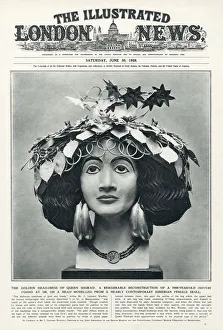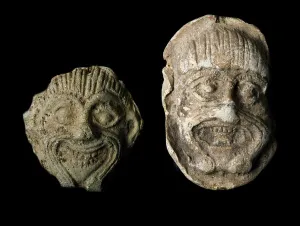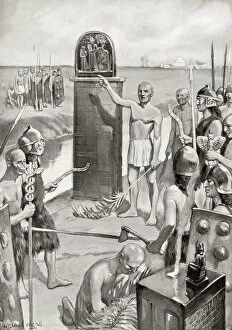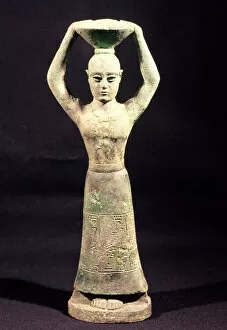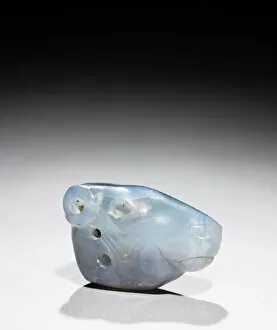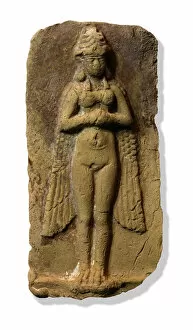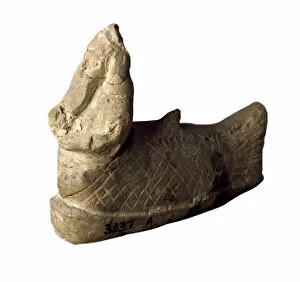Sumerian Sumerian Collection (#3)
Sumerian is an art collective that was founded in 2020 by a group of artists from the Middle East
286 Items
All Professionally Made to Order for Quick Shipping
-
Sumerian Sumerian Collection
Sumerian is an art collective that was founded in 2020 by a group of artists from the Middle East. The collective focuses on creating art that celebrates and promotes the culture, history, and identity of the region. Through their work, they aim to create a platform for dialogue between cultures and to foster understanding between people from different backgrounds. They also strive to create works that are accessible to all audiences regardless of age or background. Their artwork includes paintings, sculptures, installations, photography, video art and more. Sumerian is committed to creating meaningful works of art that reflect the diversity of their region while also providing an opportunity for collaboration among artists from different countries in the Middle East.
+
Our beautiful Wall Art and Photo Gifts include Framed Prints, Photo Prints, Poster Prints, Canvas Prints, Jigsaw Puzzles, Metal Prints and so much more
The Sumerian collection from Media Storehouse is a stunning array of wall art, framed prints, photo prints, canvas prints, jigsaw puzzles and greeting cards that showcase the ancient civilization's artistic achievements. Our collection features a range of images depicting Sumerian gods and goddesses, as well as scenes from daily life in Mesopotamia. These artworks are created by talented artists who have captured the essence of this fascinating culture through their work. The Sumerians were one of the earliest civilizations in human history and made significant contributions to art and architecture. Their artwork was characterized by intricate designs and detailed depictions of people, animals and nature. The Sumerian collection offers a glimpse into this rich cultural heritage with its beautiful selection of high-quality prints that can be displayed in homes or offices. Whether you're interested in history or simply appreciate fine art, the Sumerian collection is sure to impress with its unique blend of beauty and historical significance.
+
What are Sumerian Sumerian (Artists Arts) art prints?
Sumerian art prints are reproductions of ancient artwork created by the Sumerians, who were one of the earliest civilizations in Mesopotamia. These prints showcase the unique artistic style and cultural heritage of this civilization, which flourished around 4000 BCE. The Sumerians were known for their intricate carvings, sculptures, and pottery that depicted everyday life as well as religious beliefs. Sumerian art prints typically feature images of gods and goddesses, mythical creatures such as dragons and lions, scenes from daily life like farming or hunting, and abstract designs. The artwork is often characterized by its use of cuneiform script - a form of writing made up of wedge-shaped marks - which was used to record important events and stories. These art prints provide an opportunity for people to appreciate the beauty and historical significance of Sumerian culture in their own homes or offices. They make great gifts for history buffs or anyone interested in ancient civilizations.
+
What Sumerian Sumerian (Artists Arts) art prints can I buy from Media Storehouse?
We offer a wide range of Sumerian art prints that showcase the artistic prowess and cultural heritage of this ancient civilization. These prints are available in various sizes and formats, including framed or unframed options to suit your preferences. Some of the popular Sumerian art prints available at Media Storehouse include depictions of their gods and goddesses such as Inanna, Enki, and Anu. You can also find stunning artworks that feature scenes from daily life in ancient Sumeria, including farming activities, hunting expeditions, and religious ceremonies. In addition to these traditional artworks, Media Storehouse also offers modern interpretations of Sumerian art by contemporary artists who draw inspiration from this rich culture. Whether you're looking for a unique piece to decorate your home or office or want to add an educational touch to your space with historical artwork, we have something for everyone interested in Sumerian art.
+
How do I buy Sumerian Sumerian (Artists Arts) art prints?
To purchase Sumerian art prints from Media Storehouse, you can browse our extensive collection of artwork online. Once you have found a print that you like, simply add it to your cart and proceed to checkout. During the checkout process, you will be prompted to enter your shipping and payment information. We offer a variety of payment options including credit card and PayPal. We also offer international shipping for customers outside of the UK. If you have any questions about purchasing Sumerian art prints from Media Storehouse, our customer service team is available to assist you via email or phone. They are dedicated to providing excellent customer service and ensuring that all orders are processed quickly and efficiently. Buying Sumerian art prints from Media Storehouse is a simple and straightforward process that allows you to enjoy beautiful artwork in your home or office.
+
How much do Sumerian Sumerian (Artists Arts) art prints cost?
As We offer a wide variety of Sumerian art prints, the cost can vary depending on the size and type of print selected. However, you can expect to find affordable prices for these unique and historical pieces of artwork. The Sumerians were known for their intricate carvings and detailed sculptures, which have been preserved through various mediums including paintings and prints. These works of art offer a glimpse into the ancient civilization's culture, beliefs, and daily life. We provide high-quality reproductions of Sumerian art prints that are perfect for collectors or anyone interested in history and archaeology. Each print is carefully crafted to capture the beauty and essence of the original artwork while maintaining its authenticity. Whether you're looking for a small print to display in your home or a larger one to add to your collection, we have options available at reasonable prices.
+
How will my Sumerian Sumerian (Artists Arts) art prints be delivered to me?
We take great care in delivering your Sumerian art prints to you. We use high-quality packaging materials to ensure that your artwork arrives in perfect condition. Your prints will be carefully rolled and placed inside a sturdy tube for protection during transit. We work with trusted delivery partners who offer reliable services worldwide. Depending on your location, we may use different carriers to deliver your order. You can track the progress of your shipment using the tracking number provided once it has been dispatched. Our team is dedicated to ensuring that you receive your Sumerian art prints as quickly and efficiently as possible. If you have any questions or concerns about the delivery process, please don't hesitate to contact us and we'll be happy to assist you.

